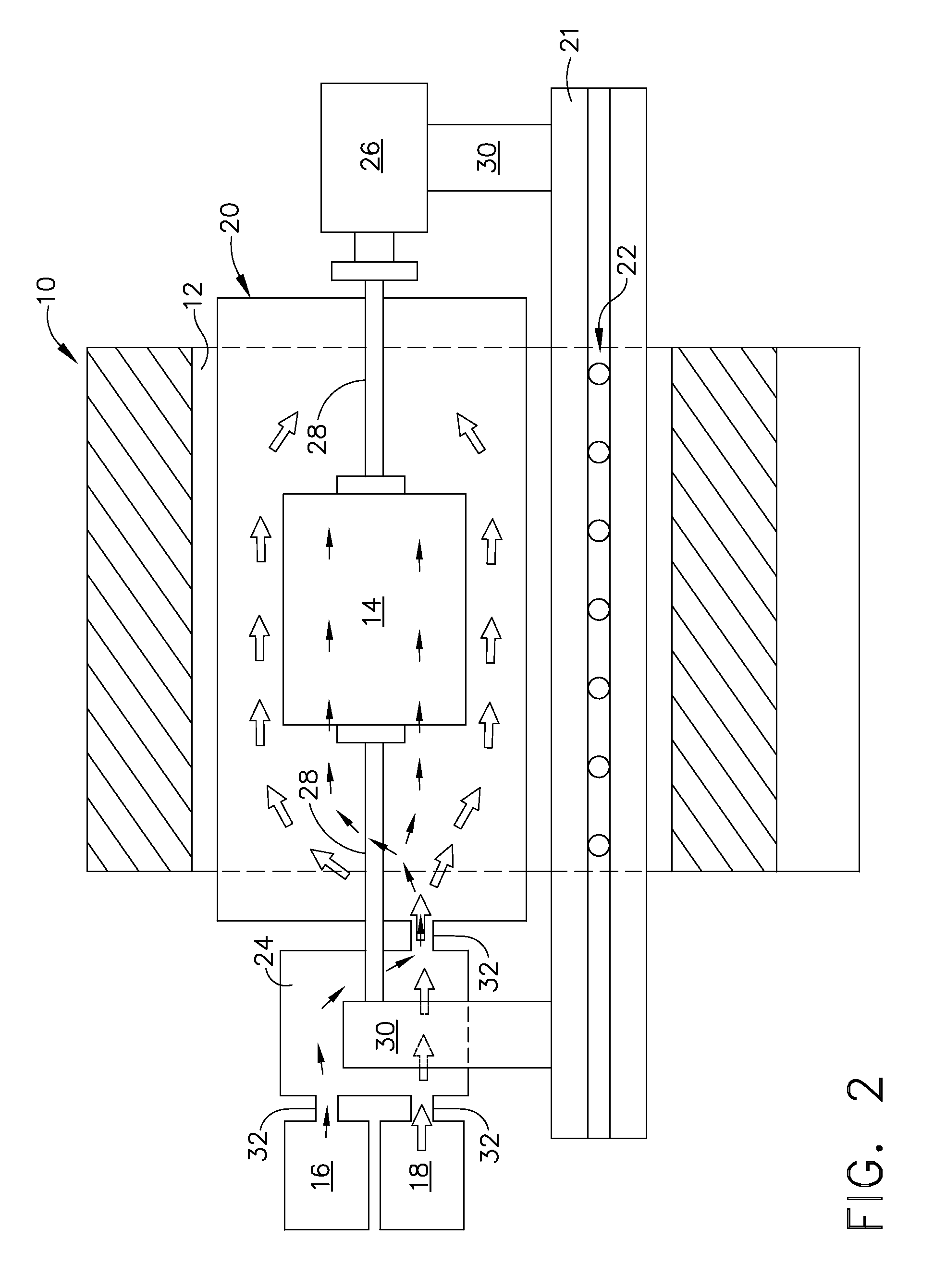Methods for optimizing parameters of gas turbine engine components
- Summary
- Abstract
- Description
- Claims
- Application Information
AI Technical Summary
Problems solved by technology
Method used
Image
Examples
Embodiment Construction
[0017]Embodiments described herein generally relate to methods for optimizing fluid flow in gas turbine engines, modulated engine systems and parts thereof. In general, such methods may involve optimizing at least one parameter of an engine component using an experimentally measured 3D flow field by providing a magnetic resonance imaging machine, providing a model of a component, which may have at least one rotatable part, placing the model into the magnetic resonance imaging machine with a fluid flow source for applying an external fluid flow and / or and internal fluid flow, applying the fluid flow to the model, collecting data related to the fluid flow about the model, and optimizing at least one operating parameter of the component using the data.
[0018]The methods set forth herein initially involve providing a magnetic resonance imaging (MRI) machine 10, as shown generally in FIG. 1. Any conventional MRI machine may be used herein, however, one example is the 1.5T GE Signa® CV / I M...
PUM
 Login to View More
Login to View More Abstract
Description
Claims
Application Information
 Login to View More
Login to View More - R&D
- Intellectual Property
- Life Sciences
- Materials
- Tech Scout
- Unparalleled Data Quality
- Higher Quality Content
- 60% Fewer Hallucinations
Browse by: Latest US Patents, China's latest patents, Technical Efficacy Thesaurus, Application Domain, Technology Topic, Popular Technical Reports.
© 2025 PatSnap. All rights reserved.Legal|Privacy policy|Modern Slavery Act Transparency Statement|Sitemap|About US| Contact US: help@patsnap.com



